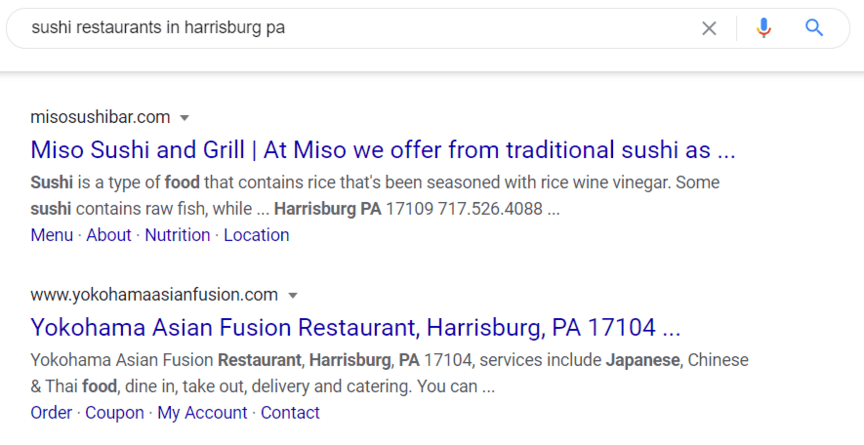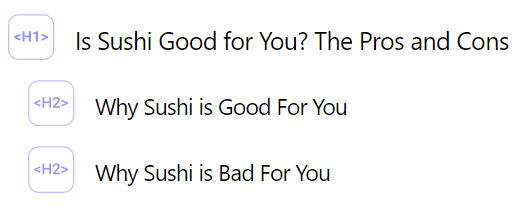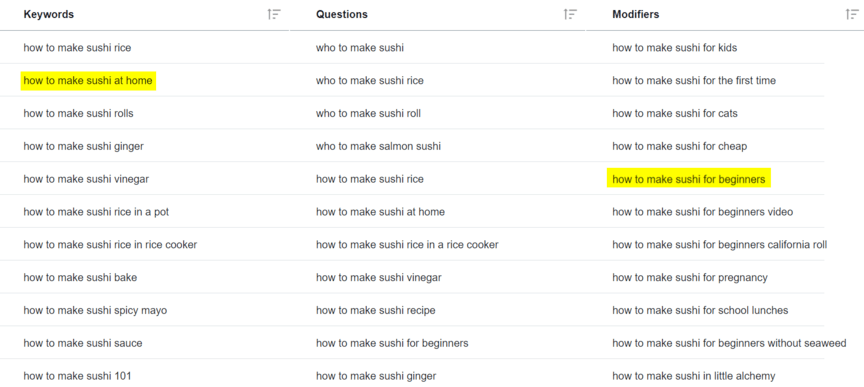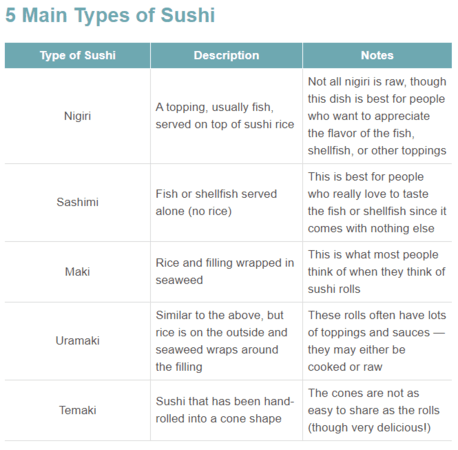What Is SEO Content? Your Guide to Creating Content for SEO (original) (raw)
What is SEO content? SEO content is content created to help your site’s pages rank higher in search results. Creating content for SEO involves keyword research, content writing, and more.
When it comes to dynamic duos in digital marketing, you can’t beat search engine optimization (SEO) and content marketing. With SEO content, you can create a site that not only ranks well in search results but also performs well in conversions.
Now, if you’re ready to start learning more about and producing SEO content for your business, keep reading. This post covers not just how to write SEO content but how to write good content for SEO. Even better, it includes a free and fast tool for analyzing your existing SEO content — try it now!
Here’s a quick overview of everything we’ll cover:
Let’s get started!
Looking for an all-in-one SEO audit tool? You’ve found it
SEO checker provides data on key metrics to give you:
- Complete SEO score
- Site Speed Analysis
- Content Grade
- and more.
What is SEO content?
SEO content is content created to help your website rank higher in search results, typically optimized for a specific keyword that users will search for online. Creating content for SEO involves keyword research, content writing, and more with the intention to drive more organic traffic to your website.
Types of SEO content
Now that you know the answer to the question, “what is SEO content,” let’s dive into its different types you might come across and create.
There are types of SEO content types, including:
- Blog posts: A blog can host tons of content topics and formats, including the ones on this list, making it one of the easiest ways to product content for SEO. You can create a blog post to answer common questions your audience searches for online, a how-to guide to explain a process, and much more.
- Product pages: Product pages include detailed information about your products so consumers can easily learn more about them. This content type is a great way to get your products in front of your target audience right when they start their search online.
- Articles: Articles are usually longer and more detailed than blog posts. They can include things like news articles, interviews, or feature pieces.
- Guides: Guides are in-depth pieces of content that explain how to something, what something is, or how something works. Some guides may contain chapters that span across multiple pages or they can be one large page.
- Videos: Videos are one of the most engaging tpyes of content for SEO. You can create videos to showcase your products or services in action or create information and how to videos to explain a process or topic.
- Infographics: Like the name suggests, an infographic is essentially a visual type of content that contains a lot of info about a specific topic, usually in the format of graphs, charts, or images. Infographics are a great way to engage your audience with visuals and present info in an easily-digestable way.
- Glossaries: Many people use search engines to find the definition of words and phrases. Creating a glossary of definitions related to your business, industry, and products or services is a great way to give these users the answers they need, and bring them to your website.
How to write SEO content for your website
Start writing SEO content for your website by following these nine tips:
- Focus on creating shareable content for SEO to earn links
- Choose a content format
- Target long-tail keywords
- Place keywords in the title tag
- Include keywords in header tags
- Feature related keywords throughout the body text
- Optimize image ALT text for SEO
- Make SEO content easy to skim
- Add in-page links that use the targeted keyword
1. Focus on creating shareable content for SEO to earn links
Links are vital for SEO. If other sites think your content is worth linking to (inbound links), search engines see it as a vote of quality. At the same time, linking to other sites (outbound links), helps readers find additional resources on your topic.
As far as inbound links are concerned, your concern should be creating content that is worth linking to and getting the word out via social media and promotion. Don’t try to spam forums or comment sections with links to your site, and never buy links from other site owners.
In the case of outbound links, always be sure that the sites and pages you link to are relevant and useful. If search engines notice that you are linking to spammy, low-quality sites, they’ll start to recognize your site as falling into the same category.
2. Choose a content format
While text is the easiest to optimize for search engines, it’s a good idea to branch out and try other formats if you have the resources. Images, videos, and infographics are all extremely popular with visitors and can be a great source of inbound links. 
3. Target long-tail keywords
Long-tail keywords are specific and should attract traffic likely to convert.  For example, the keyword “restaurants in Pennsylvania” might get a lot of searches per month, but comes with a lot of competition.
For example, the keyword “restaurants in Pennsylvania” might get a lot of searches per month, but comes with a lot of competition.
Your business will have trouble ranking for this keyword, even if you create SEO-friendly content. Optimizing for a keyword like “sushi restaurants in Harrisburg” would attract searchers who are looking for restaurants like yours (instead of, say, a Mexican restaurant in Philadelphia), and are likely to become customers.
4. Place keywords in the title tag
Your title tag sends a big signal to Google, as well as other search engines. That’s why SEO content writing will involve writing an optimized title tag. Remember, title tags appear in search results — they don’t appear on your page, like your header tags.  When you write title tags for your SEO content, you want to follow these tips:
When you write title tags for your SEO content, you want to follow these tips:
- Include your core keyword
- Keep your title tag to 55 characters
- Use your core keyword at the beginning, versus the end, of your title tag
- Add your related keyword, if possible
In coordination with these tips, you also want to keep in mind the following factors:
- Readability: A readable title tag matters more than an optimized title tag. Generally, you’ll have readability issues when you try to over-optimize your title tag, like by including a related keyword that makes your title tag wordy.
- Accuracy: A title tag motivates people to click. If they arrive on your site, though, and find your SEO content doesn’t match your title tag, they’ll bounce back to the search results, which will hurt your rankings. Avoid click-bait titles and aim for accuracy instead.
If you want to see how well your title tag performs for existing SEO content, try our SEO checker.
It’ll analyze your title tag and check its optimization. Based on its findings, it’ll provide tips for improving not only your title tag’s optimization but also your content’s optimization overall. Even better, it’ll include some related resources to help you write better title tags.
5. Include keywords in header tags
If you’re unfamiliar with HTML, header tags help readers see what your page is about and skim it. Header tags are like chapter names for a book. If someone wants to skip to a particular topic, they can use your header tags to find it. Header tags range from H1 to H6.
Besides users, header tags also help search engines understand your content. That’s why it’s best practice during the SEO content writing process to optimize header tags with your core or related keywords.  For example, a post explaining the pros and cons of sushi may have the following header tags:
For example, a post explaining the pros and cons of sushi may have the following header tags:
- H1: The Pros and Cons of Sushi
- H2: The Advantages of Sushi
- H2: The Disadvantages of Sushi
These header tags can target a few keywords related to this topic, including:
- Sushi benefits
- Sushi disadvantages
- Sushi benefits and risks
By including a keyword or two in your page headers, search engines will have an easier time identifying your page’s topic, which means more accurate rankings. As a bonus, it makes it a lot easier for site visitors to skim your content and find what they want.
6. Feature related keywords throughout the body text
Every piece of SEO content should target more than one keyword. That’s because people use different words or phrases to ask the same question.
Someone wondering how to make sushi, for instance, may search “how to make sushi at home,” while someone else will search “how to make sushi for beginners.”  A keyword research tool like KeywordsFX — it’s free — can help you discover related keywords to target in your SEO content writing.
A keyword research tool like KeywordsFX — it’s free — can help you discover related keywords to target in your SEO content writing.
You can even use it to discover new content ideas, which can help you expand your SEO content strategy.
Once you know which keywords you’ll target, use them throughout your content. Besides including keywords in your title tags and headings, for example, you want to use your keywords in your body text too.
If you’re writing a how-to guide on making sushi at home, your introductory paragraph may include the following text — and keyword:
“Are you ready to learn how to make sushi at home? Then gather the following ingredients!”
Like your title tags and headings, you should always aim for readability. If you stuff content with keywords, you will push users away from not only your SEO content but also your business.
Web crawlers have also become quite advanced over the years. They’ll have zero trouble spotting keyword stuffing, which translates to a low ranking for your content.
SEO checker is a neat tool you can use to see if crawlers understand your content and its keyword targeting. Does Google, for instance, realize that you’re explaining how to make sushi at home, or does it think you’re talking about something else? Enter your page URL into our SEO checker and find out!
Score My Content’s Optimization
It’ll analyze your page and then compile a list of words or phrases that seem to represent your content. This information can help your business assess its keyword targeting, as well as determine where you need to improve.
7. Optimize image alt text for SEO
Although most site visitors won’t see your image alt tags, they’re essential for SEO. Search engines can’t process visual content like human eyes, and they rely on these descriptions to determine what appears on your page.
Visually impaired users also rely on image alt text to understand your content and its visuals.  When you assign alt text to your image, follow these tips:
When you assign alt text to your image, follow these tips:
- Describe the image exactly as it appears, like “sushi tray”
- Use the core keyword if applicable, like “woman learning how to make sushi”
- Keep the image alt text to 125 characters
If you haven’t used image alt text consistently, you can quickly determine which pieces of SEO content need it. Just enter the content’s URL into our SEO checker. It’ll analyze your content, check your alt text, and report which images need image alt text.
Is Your Image Alt Text SEO-Friendly?
If you haven’t already included alt text for your images, now’s the time to start. In addition to being useful for SEO, image alt text also ensures that your site is Section 508 compliant, which you want as non-compliance can result in hefty fines.
8. Make SEO content easy to skim
Usability is an SEO ranking factor that often gets overlooked. You can produce an excellent guide on how to make sushi at home, but if you fail to format your content in a way that makes it easy to read, you will struggle to earn that page-one ranking — and all the traffic that comes with it.
That’s why every SEO content writing strategy should think about content formatting and organization.  The most common tips for making your SEO-friendly content even friendlier for usability include:
The most common tips for making your SEO-friendly content even friendlier for usability include:
- Using header tags to organize content
- Limiting paragraphs to around three lines or sentences
- Including visuals, like images or videos to break up content
- Having a sans serif font versus a serif font
You can upgrade the user-friendliness of your content and site even more with software that allows users to customize your website’s font size, spacing, and more. Most Americans with Disabilities Act (ADA) compliance software will allow you to offer these features instantly.
9. Add in-page links that use the targeted keyword
A good practice for SEO content creation involves sending internal links, or links from other pages on your site, to your newest piece of SEO content. This move helps Google, as well as users, index your new content and explore your website. As a quick refresher, there are two parts to internal links:
- The link itself: The link is the URL, like “https://www.example.com/blog/new-blog-post/.”
- The anchor text: The anchor text is the text that represents the URL and gets displayed to users.
You can think of the link as your street address, “100 Blueberry Drive,” and the anchor text as your home’s physical description, like “The house with the blue mailbox on Blueberry Drive.”
That description gives people an accurate description of where they’re headed. Your anchor text should do the same. It should accurately and confidently direct users to a new page. An internal or in-page link to your newest blog post, “How to Make Sushi at Home,” for example, should feature anchor text like “making sushi at home” or “how to make sushi as a beginner.”
If you use inaccurate anchor text, like “sushi is delicious,” it sends a mixed message to search engines and users. Both parties think they’ll arrive on a page about sushi’s benefits but instead come to a page that explains how to make it, which leaves Google with questions about how to rank your page.
For the best results with this step in how to write SEO content, aim to:
- Send three in-page, internal links to every piece of new content you produce
- Use accurate anchor text for each link
If you aren’t sure about the current status of existing content, you can download and use a tool like Screaming Frog. Or, you can input your URL into the SEO checker and get an instant analysis that looks at a page’s internal and external links.
Does Your Content Have Enough Links?
Looking to get more value from your SEO content strategy?
SEO content is an excellent way for your business to attract website traffic, leads, and sales. Building an SEO content strategy and maintaining it, however, isn’t easy.
It requires time, dedication, and skill to manage a strategy that achieves your company’s goals. That’s why many companies invest in SEO content services. At WebFX, for example, we offer SEO services that include SEO content development, creation, and writing.
With our custom SEO content writing strategies, we’ve helped our clients earn more than $10 billion in revenue in the past five years — and we’re ready to help your business too. Contact us online or give us a ring at 888-601-5359 to learn more about our SEO services!